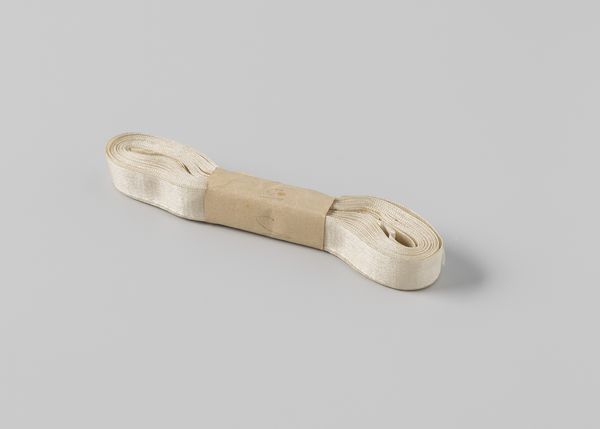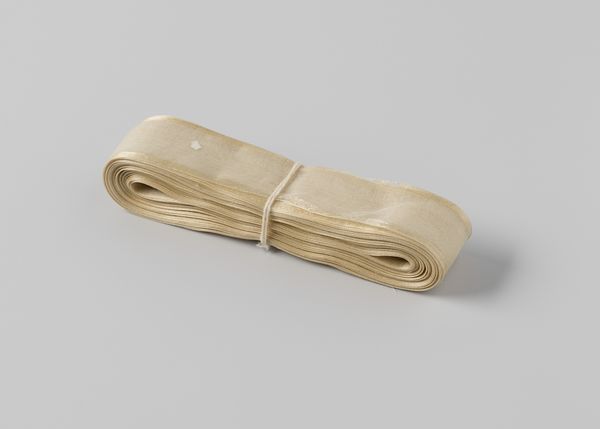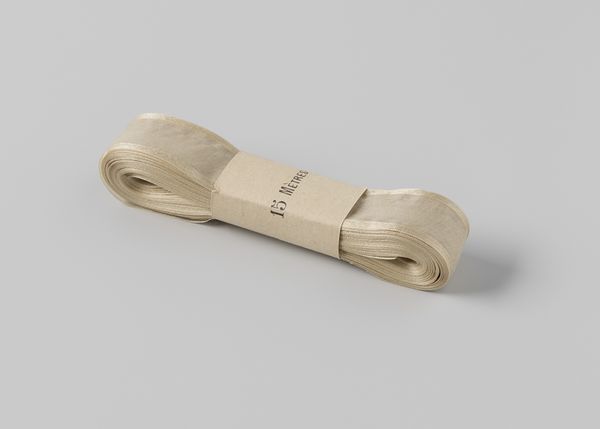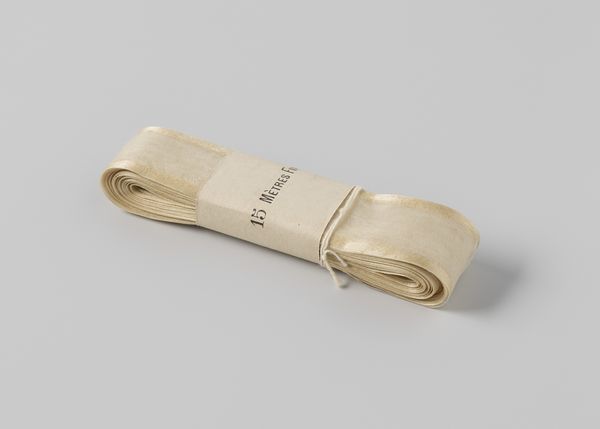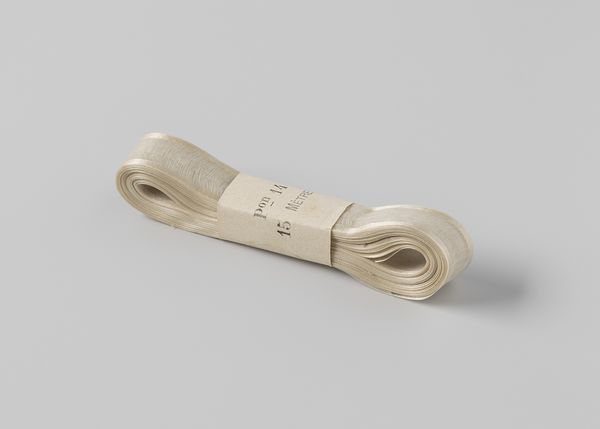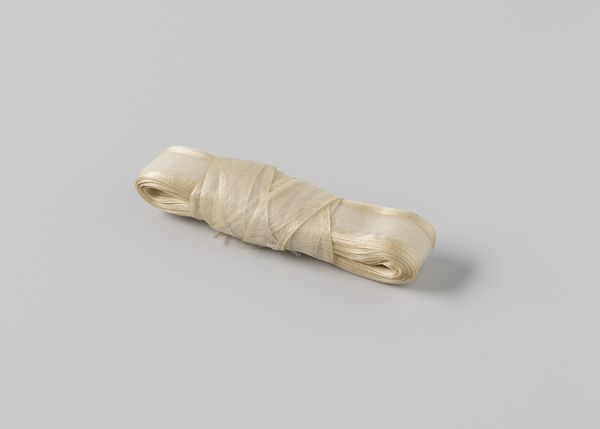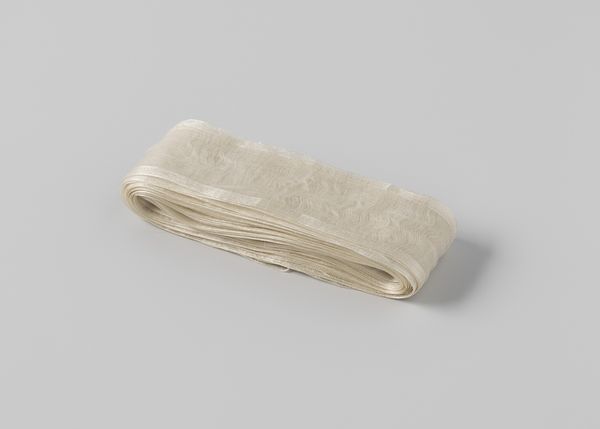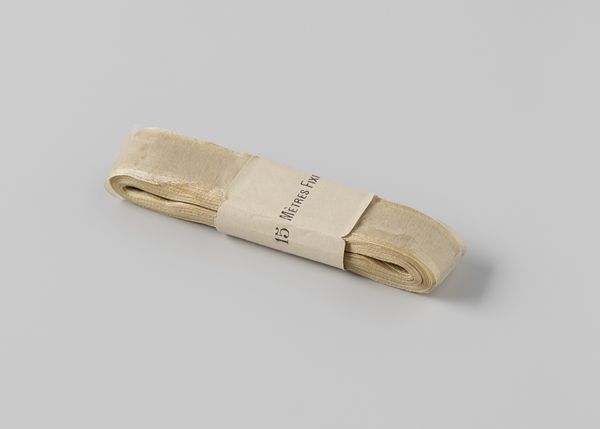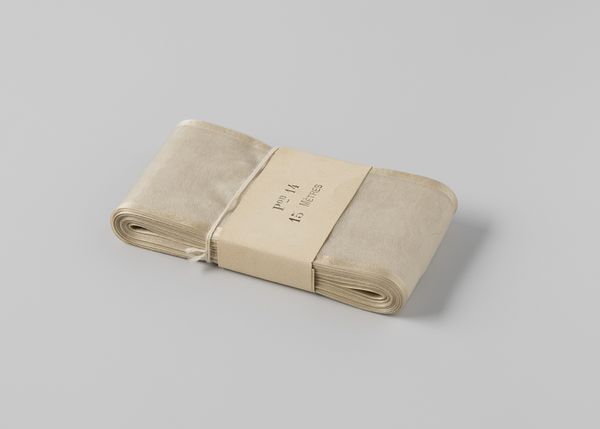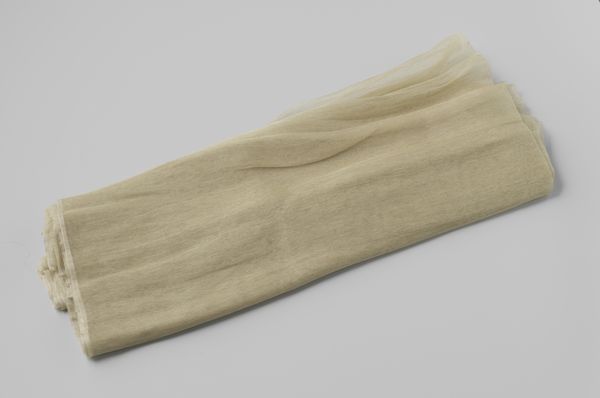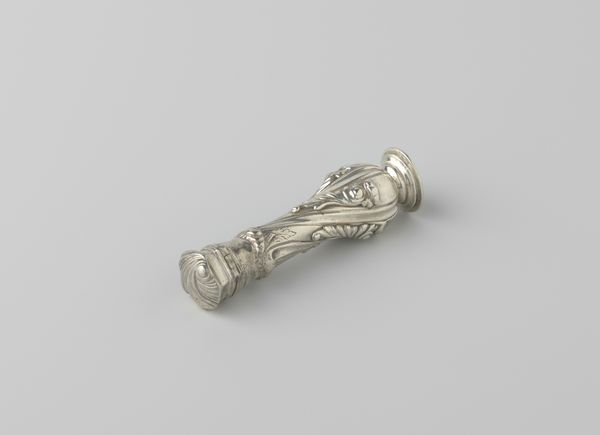
fibre-art, textile, photography
#
still-life-photography
#
fibre-art
#
textile
#
photography
Dimensions: length 1500 cm, width 2.5 cm, height 2 cm, length 11.5 cm
Copyright: Rijks Museum: Open Domain
Editor: This is a photograph entitled "Lint van crèmekleurig gaas van 15 meter" or "Ribbon of cream-colored gauze of 15 meters," dating from between 1900 and 1915, and currently housed in the Rijksmuseum. It's just a photograph of a roll of ribbon, and I'm curious why it's considered art. What do you make of this image? Curator: Well, it is interesting, isn't it? On the surface, it seems incredibly mundane. But, consider the context of its creation. Photography in the early 20th century was rapidly evolving. The snapshot aesthetic was gaining popularity, capturing everyday life in ways previously unseen. How might the social function of textiles and dressmaking during that era influenced the making of the photograph? Editor: Hmm, so maybe the ribbon itself is almost a symbol of domesticity, the rising middle class, and consumer culture at the time? Curator: Precisely. This isn't just about documenting an object; it is about placing value, literally, on the items that shape identity and status in that burgeoning consumer society. The careful arrangement and lighting elevate the ribbon, imbuing it with significance. We must also remember that museums actively shape our understanding of objects; putting it in the gallery context changes our reception of it. Do you agree? Editor: I do. Seeing it displayed changes how I perceive it. It's now being presented to me as something to study and observe, and not just some ordinary ribbon. Thank you for pointing that out. Curator: The act of photographing something as simple as ribbon forces the viewer to pause and reconsider the narratives woven, both literally and figuratively, into the fabric of everyday life. Editor: That's really insightful. It gives me a fresh appreciation for considering context. Curator: It does for me too, reflecting together allows different ways of interpreting artworks.
Comments
No comments
Be the first to comment and join the conversation on the ultimate creative platform.
